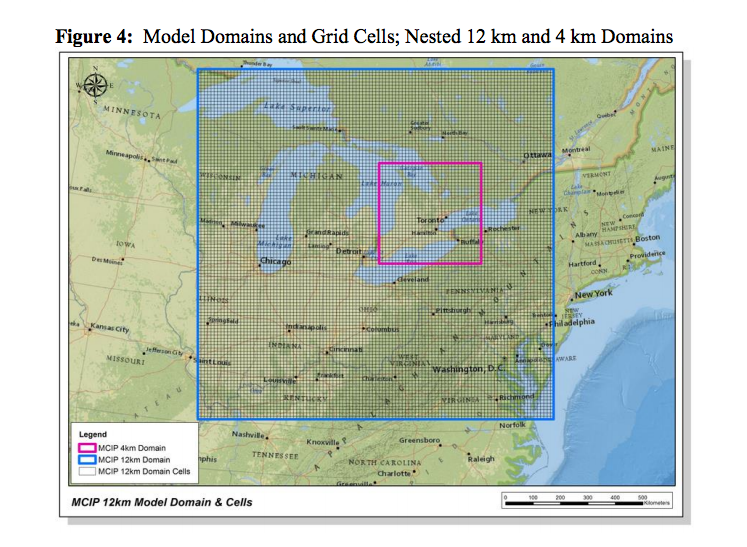To understand why the nesting ratio of 3 is preferred to the nesting ratio of 2, it is important to understand the following two features of WRF:
1) Grids are Arakawa C-staggered: mass points are at cell centers,
u-velocities are at east-west cell edges, v-velocities are at
north-south cell edges. See Mesinger and Arakawa 1976, Chapter 4
for a good description and explanation of Arakawa staggering. WRF's
grid in computer memory looks like this:
+-------+-------+-------+
| v | v | v |
j=3| | | |
| u p | u p | u p |
+-------+-------+-------+
| v | v | v |
j=2| | | |
| u p | u p | u p |
+-------+-------+-------+
| v | v | v |
j=1| | | |
| u p | u p | u p |
+-------+-------+-------+
i=1 i=2 i=3
Thus, p(1,1) is geographically located $\Delta x /2$ East of u(1,1) and $\Delta x /2$ south of v(1,1).
2) For computational efficiency and accuracy, the data from the child (nested) domain is copied to the parent domain. This is opposite from the data going from parent to child, which is interpolated. For more specifics, see the WRF Registry documentation by Michalakes and Schaffer.
As a consequence of the above two, it is more computationally efficient and accurate to use a nesting ratio of 3, rather than 2. In the example below, for 2:1 nesting ratio and 1-d case for simplicity, u values are simply copied from child to parent array because these points are guaranteed to overlap between two grids. Notice that the p points do not overlap and child p values must be interpolated to the parent. This induces computational overhead and numerical damping of the $2\Delta x$ wavelength in mass:
child u p u p u p u
+-------+-------+-------+
| \ / |
| \ / |
| \ / |
v v v
parent U P U
+---------------+
In a 3:1 nesting ratio however, both the velocity and mass points overlap, and a simple copy is feasible:
child u p u p u p u
+-------+-------+-------+
| | |
| | |
v v v
parent U P U
+-----------------------+
